Mysterious Watson Brake: Old Mound Complex In North America With Earthworks Raised For Unknown Purpose
Ellen Lloyd - AncientPages.com - In northern Louisiana, North America, there is a very interesting and mysterious ancient site known as Watson Brake. This ancient site challenges our knowledge about North American history as the mounds are some of the earliest known remnants of human construction in the New World.
Mounds At Watson Brake Were Raised By Complex Ancient Society
Located in the floodplain of the Ouachita River near Monroe, Watson Brake consists of 11 ancient mounds that measure from three to 25 feet in height.
Some sections of the oval-shaped earth berm probably have been eroded by rains and floods during the past 5,000 years. Credit: Northeastern State University
The construction of the mounds started about 5,400 years ago, predating other similar public architecture at Indian sites by nearly 2,000 years. This suggests the region was inhabited by a pre-agriculture, pre-ceramic hunting society that was much more socially complex than previously thought.
What we understand about the Mound Builders is changing due to research in the last decade.
What Was the Purpose Of The Mounds?
According to many archaeologists, the purpose of the mounds is unknown. Since no human remains or ceremonial objects have been found, perhaps the mounds were not used for burial or religious purposes.
Artist's conception of Watson Brake. Credit: Herb Roe - CC BY-SA 4.0
On the other hand, the area enclosed by the mounds was kept clean of debris, suggesting its use as a ritual space. The reasons why such elaborate activities first occurred here remain elusive. Another possibility is that the mounds were originally built to protect Native Americans from floods.h
Yet, it seems logical to assume our ancestors must have had a reason for building these mounds. The surfaces of the ridges and mounds show little evidence of occupation, leading archaeologists to believe that Watson Brake was occupied primarily before and during the building of the mounds.
William F. Romain, Ph.D., who runs the Ancient Earthworks Project, believes Watson Brake is the oldest solstice-aligned earthwork complex in the Americas.
The ancient mounds are very difficult to access because half of the site is on private property, making it very restricted. The Archaeological Conservancy purchased the other half of the site in 1996.
In 2014, William F. Romain was finally given permission to visit the site. He invited Dick Shiels, Director of the Newark Earthworks Center, and Bill Monaghan, Associate Director of the Glenn Black Laboratory, to accompany him. Using LIDAR technology, William F. Romain discovered Watson Brake was indeed an important archaeoastronomical site that our ancestors used for sky-watching.
The theory that Watson Brake was an ancient astronomical site is not far-fetched. Watson Brake is just like Poverty Point, located in Louisiana.
Poverty Point is still a place that remains a prehistoric mystery. The massive earthworks at Poverty Point near Epps were long considered the beginning of extensive mound construction. It has been suggested that the Poverty Point octagon was the world's largest ancient solstice marker.
Researchers now have reason to believe that mound construction was widespread by 3000 BC in northern and southern Louisiana, Mississippi, and Florida based on numerous discoveries.
Were the Watson Brake mounds and massive earthworks at Poverty Point built by the same culture?
Some scientists think the ancient mounds at Watson Brake might have been raised without a purpose.
Poverty Point Octagon. Credit: Steven Patricia
"I know it sounds awfully Zen-like, but maybe the answer is that building them was the purpose, 'Dr. Bruce D. Smith, an archeologist and specialist in early American agriculture at the Smithsonian Institution in Washington, said.
Tristam Kidder, associate professor of anthropology at Tulane University, said the archaeological sites found along the Ouachita River are typical of those found elsewhere in the southeastern United States and unique. They are unique in that they are older, but the earlier sites are more or less similar to the rest of the southeast in general characteristics, Kidder said.
It is challenging to say anything with certainty about Watson Brake. Few archaeological excavations have been conducted at the site, and the full extent of the first earthworks is not yet known.
Watson Brake's earthworks testify to the complexity of an ancient culture that remains largely a mystery.
Updated on September 22, 2023
Written by Ellen Lloyd – AncientPages.com
Copyright © AncientPages.com All rights reserved. This material may not be published, broadcast, rewritten or redistributed in whole or part without the express written permission of AncientPages.com
Expand for referencesMore From Ancient Pages
-
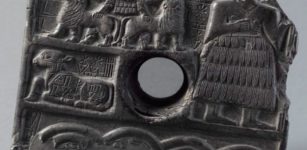 Votive Plaque Dedicated To Dudu High Priest Of God Ningirsu
Artifacts | Jan 16, 2017
Votive Plaque Dedicated To Dudu High Priest Of God Ningirsu
Artifacts | Jan 16, 2017 -
 Story Of Uncle Sam – Symbol Of The United States Government
Ancient Symbols | Apr 24, 2017
Story Of Uncle Sam – Symbol Of The United States Government
Ancient Symbols | Apr 24, 2017 -
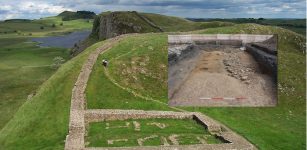 Fantastic Discovery At Hadrian’s Wall Reported By Archaeologists
Archaeology | Sep 10, 2022
Fantastic Discovery At Hadrian’s Wall Reported By Archaeologists
Archaeology | Sep 10, 2022 -
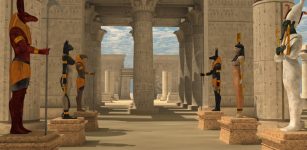 Zep Tepi – When Gods Established Their Kingdom On Earth In Egypt
Egyptian Mythology | May 23, 2021
Zep Tepi – When Gods Established Their Kingdom On Earth In Egypt
Egyptian Mythology | May 23, 2021 -
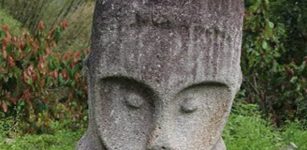 Mysterious Prehistoric Statues In Bada Valley, Indonesia Surrounded With Countless Legends
Civilizations | Jan 9, 2019
Mysterious Prehistoric Statues In Bada Valley, Indonesia Surrounded With Countless Legends
Civilizations | Jan 9, 2019 -
 Rare Pre-Columbian Archaic Settlement Discovered In The Dominican Republic May Solve A Caribbean Mystery
Archaeology | Apr 12, 2022
Rare Pre-Columbian Archaic Settlement Discovered In The Dominican Republic May Solve A Caribbean Mystery
Archaeology | Apr 12, 2022 -
 Hidden Bronze and Iron Treasures Found In Prehistoric Hillfort In Northeast Hungary
Archaeology | Oct 9, 2024
Hidden Bronze and Iron Treasures Found In Prehistoric Hillfort In Northeast Hungary
Archaeology | Oct 9, 2024 -
 Old Bone Links Lost American Parrot To Ancient Indigenous Bird Trade
Archaeology | Nov 8, 2022
Old Bone Links Lost American Parrot To Ancient Indigenous Bird Trade
Archaeology | Nov 8, 2022 -
 World’s First Recreated Ancient Egyptian Garden Is Now Open To The Public
News | May 17, 2022
World’s First Recreated Ancient Egyptian Garden Is Now Open To The Public
News | May 17, 2022 -
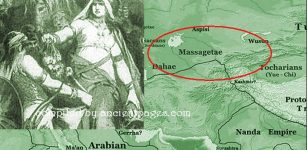 Massagetae Tribe And Its Queen Tomyris Whose Victory Over Cyrus The Great Became A Legend
Civilizations | Nov 18, 2019
Massagetae Tribe And Its Queen Tomyris Whose Victory Over Cyrus The Great Became A Legend
Civilizations | Nov 18, 2019 -
 On This Day In History: Alexander The Great Defeats Darius III Of Persia In The Battle Of The Granicus On May 22, 334 B.C.
News | May 22, 2016
On This Day In History: Alexander The Great Defeats Darius III Of Persia In The Battle Of The Granicus On May 22, 334 B.C.
News | May 22, 2016 -
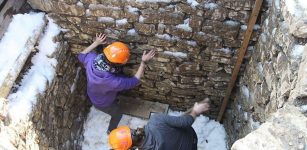 Did Ancient Romans Use Four-Meter Deep Shafts As Refrigerators During Summer?
Archaeology | Apr 6, 2018
Did Ancient Romans Use Four-Meter Deep Shafts As Refrigerators During Summer?
Archaeology | Apr 6, 2018 -
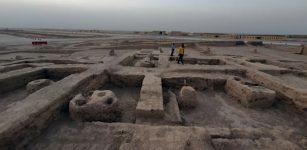 Ancient Parthian City With Hundreds Of Artifacts Unearthed In Iraq
Archaeology | Aug 16, 2022
Ancient Parthian City With Hundreds Of Artifacts Unearthed In Iraq
Archaeology | Aug 16, 2022 -
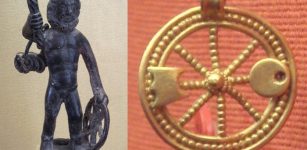 Taranis – Celtic God Of Wheel And Thunder Resembled Roman God Jupiter
Celtic Mythology | Jul 15, 2019
Taranis – Celtic God Of Wheel And Thunder Resembled Roman God Jupiter
Celtic Mythology | Jul 15, 2019 -
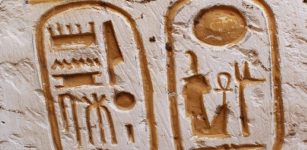 Palace Located Inside Ancient Temple Of Ramses II Discovered In Abydos, Egypt
Archaeology | Apr 1, 2019
Palace Located Inside Ancient Temple Of Ramses II Discovered In Abydos, Egypt
Archaeology | Apr 1, 2019 -
 Mummy Of Pharaoh Amenhotep I Digitally Unwrapped For The First Time In 3,000 Years
Archaeology | Dec 30, 2021
Mummy Of Pharaoh Amenhotep I Digitally Unwrapped For The First Time In 3,000 Years
Archaeology | Dec 30, 2021 -
 Hasankeyf – 12,000-Year-Old Mesopotamian City Will Be Destroyed – Decision Sparks Outrage And Controversy
Archaeology | Aug 28, 2019
Hasankeyf – 12,000-Year-Old Mesopotamian City Will Be Destroyed – Decision Sparks Outrage And Controversy
Archaeology | Aug 28, 2019 -
 New Attempt To Solve The Easter Island Mystery – What Did Rapa Nui Look Like Before Europeans Arrived?
Archaeology | Sep 20, 2017
New Attempt To Solve The Easter Island Mystery – What Did Rapa Nui Look Like Before Europeans Arrived?
Archaeology | Sep 20, 2017 -
 Mystery Of The Anglo-Saxon Burial At Lowbury Hill May Soon Be Solved
Archaeology | Mar 7, 2023
Mystery Of The Anglo-Saxon Burial At Lowbury Hill May Soon Be Solved
Archaeology | Mar 7, 2023 -
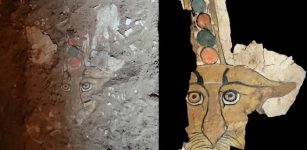 Rare Ancient Leopard Painting Discovered On Sarcophagus In Aswan, Egypt
Archaeology | Feb 25, 2020
Rare Ancient Leopard Painting Discovered On Sarcophagus In Aswan, Egypt
Archaeology | Feb 25, 2020





